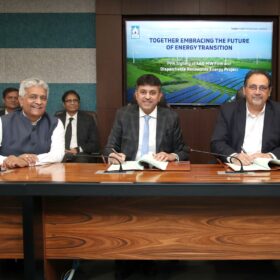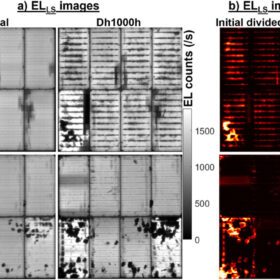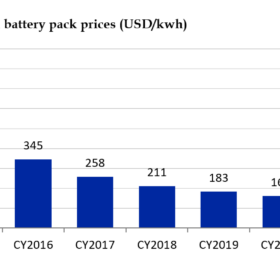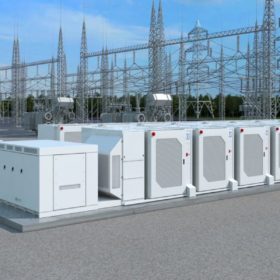Ministry of Steel is committed to Net-Zero target by 2070. Towards this, in short term (FY 2030), reduction of carbon emissions in steel industry through promotion of energy and resource efficiency, use of renewable energy etc. is the focus. For the medium term (2030-2047), Green Hydrogen and Carbon Capture, Utilisation and Storage (CCUS) technologies are the focus areas to reduce carbon emission. For long term (2047-2070), disruptive alternative technological innovations can help achieve the transition to net-zero. For this purpose, Ministry of Steel is continuously engaging with various stakeholders and members of steel industry for deliberations to assess technology adoption, usage of efficient raw material such as scrap, carbon capture technologies and green hydrogen.
Commercial production of steel using green hydrogen has not started in the country. However, following 2 pilot projects on CCUS have been undertaken: –
- Tata Steel commissioned a 5 tonnes per day (TPD) carbon capture plant at its Jamshedpur Works.
- Jindal Steel Works (JSW) has implemented carbon capture and storage facility with 100 tonnes per day (TPD) capacity at its Direct Reduced Iron (DRI) plant at Dolvi. The captured carbon is to be utilized in food and beverages industry.
Further, Saarloha (Kalyani Group) has recently pioneered the production of green steel and launched its two green steel brands, namely, KALYANI FeRRESTA and KALYANI FeRRESTA PLUS, with reduced emissions due to usage of 70% scrap and renewable energy in Electric Arc Furnace.
Other steps taken in the country for promoting decarbonization in steel industry include:
(1) Steel Scrap Recycling Policy, 2019 enhances the availability of domestically generated scrap to reduce the consumption of coal in steel making.
(2) Ministry of New and Renewable Energy (MNRE) has announced National Green Hydrogen Mission for green hydrogen production and usage. The steel sector has also been made a stakeholder in the Mission.
(3) Motor Vehicles (Registration and Functions of Vehicles Scrapping Facility) Rules September 2021, shall increase availability of scrap in the steel sector.
(4) National Solar Mission launched by MNRE in January 2010 promotes the use of solar energy and also helps reduce the emission of steel industry.
(5) Perform, Achieve and Trade (PAT) scheme, under National Mission for Enhanced Energy Efficiency, incentivizes steel industry to reduce energy consumption.
(6) The steel sector has adopted the Best Available Technologies (BAT) available globally, in the modernization & expansions projects.
(7) Japan’s New Energy and Industrial Technology Development Organization (NEDO) Model Projects for Energy Efficiency Improvement have been implemented in steel plants.
This information was given by the Union Minister of State for Steel and Rural Development, Shri Faggan Singh Kulaste, in a written reply in the Rajya Sabha today.





